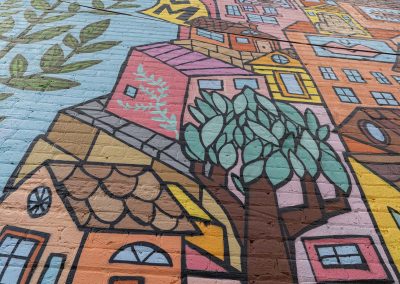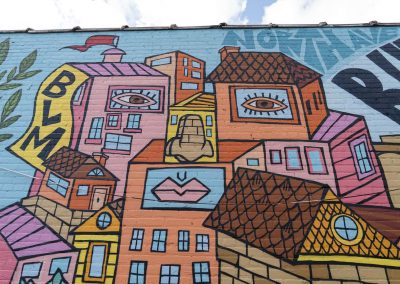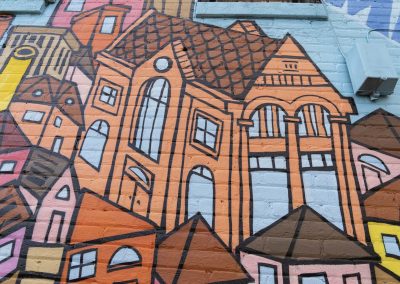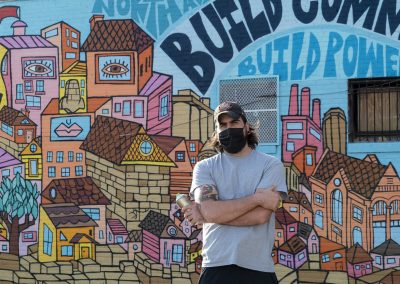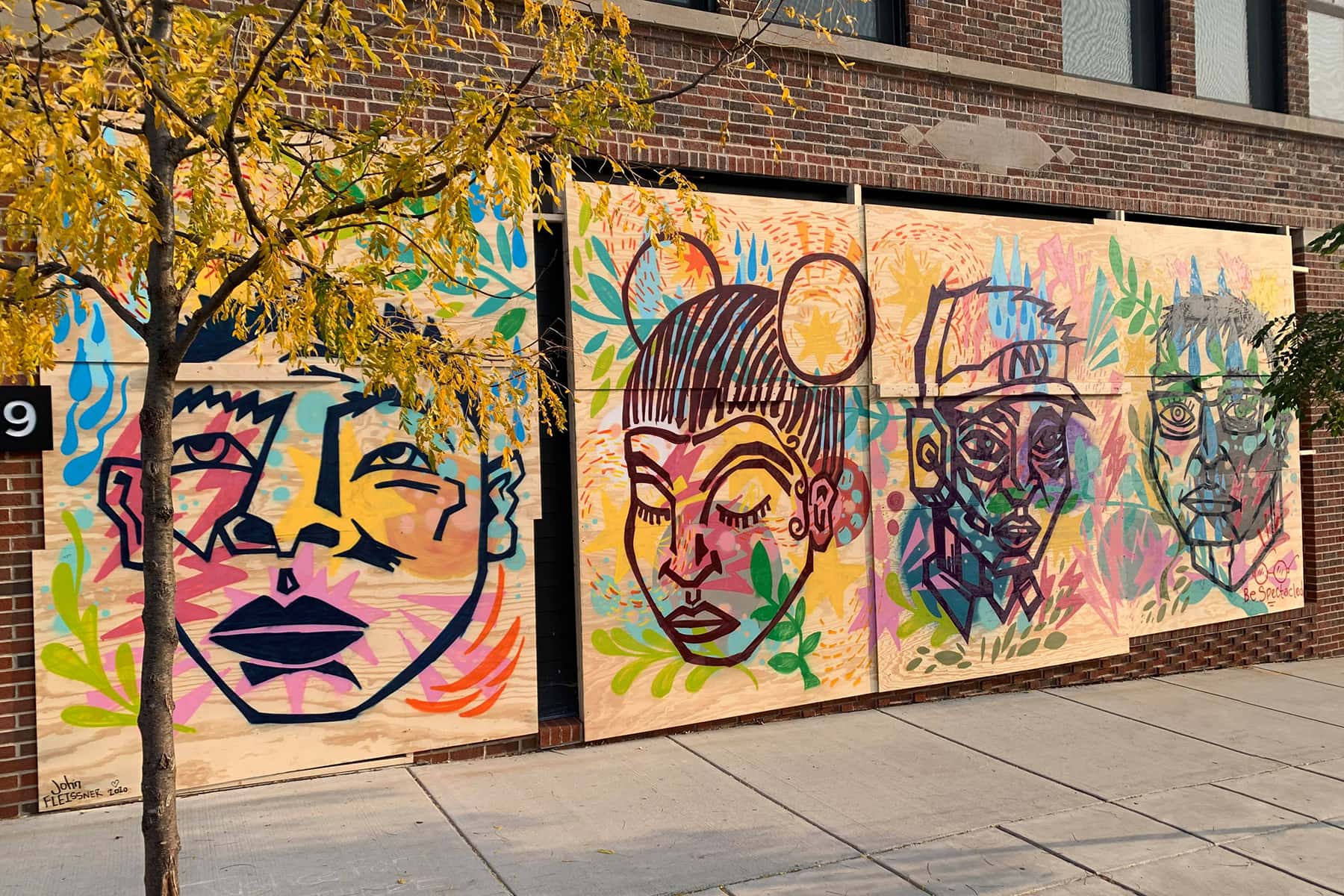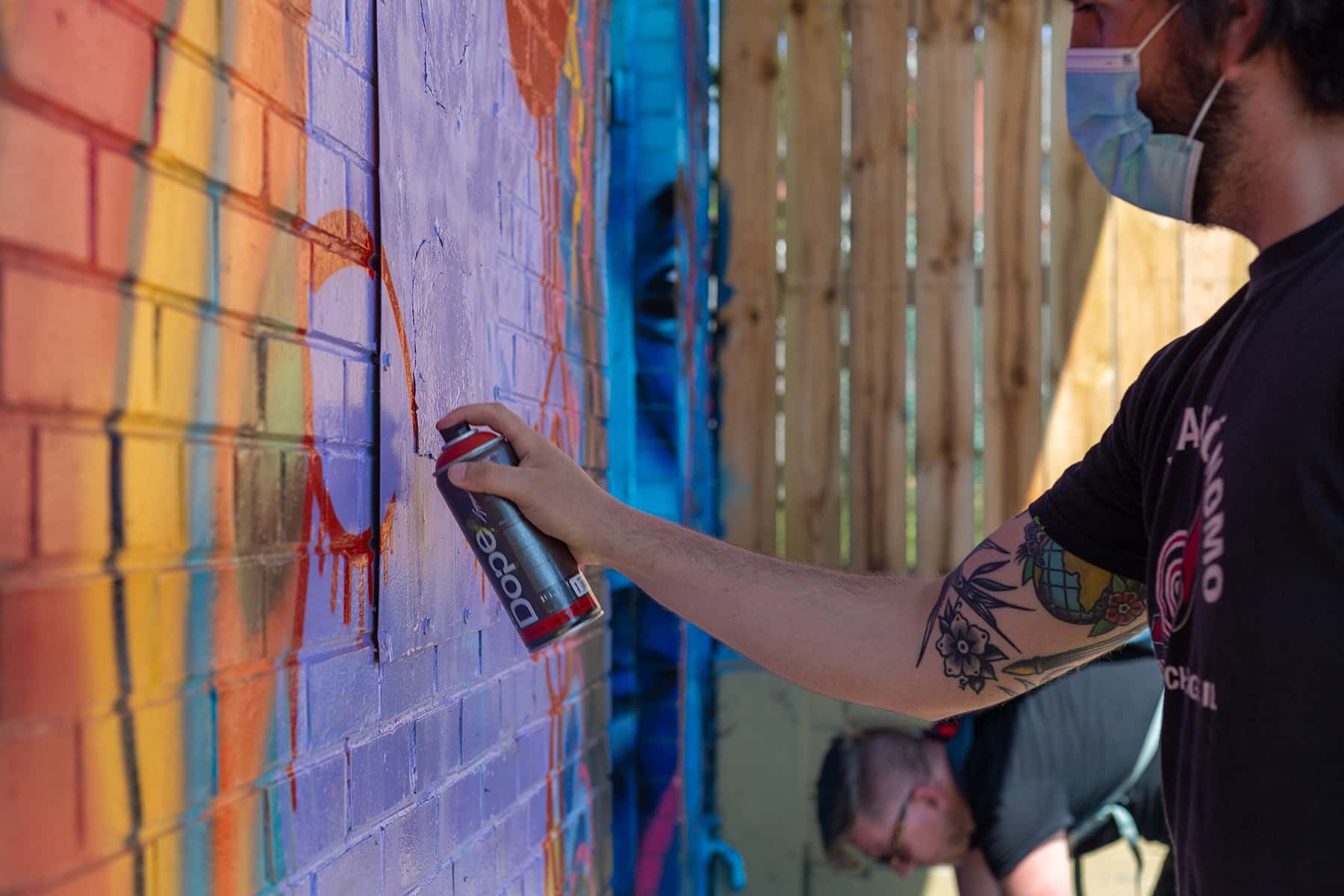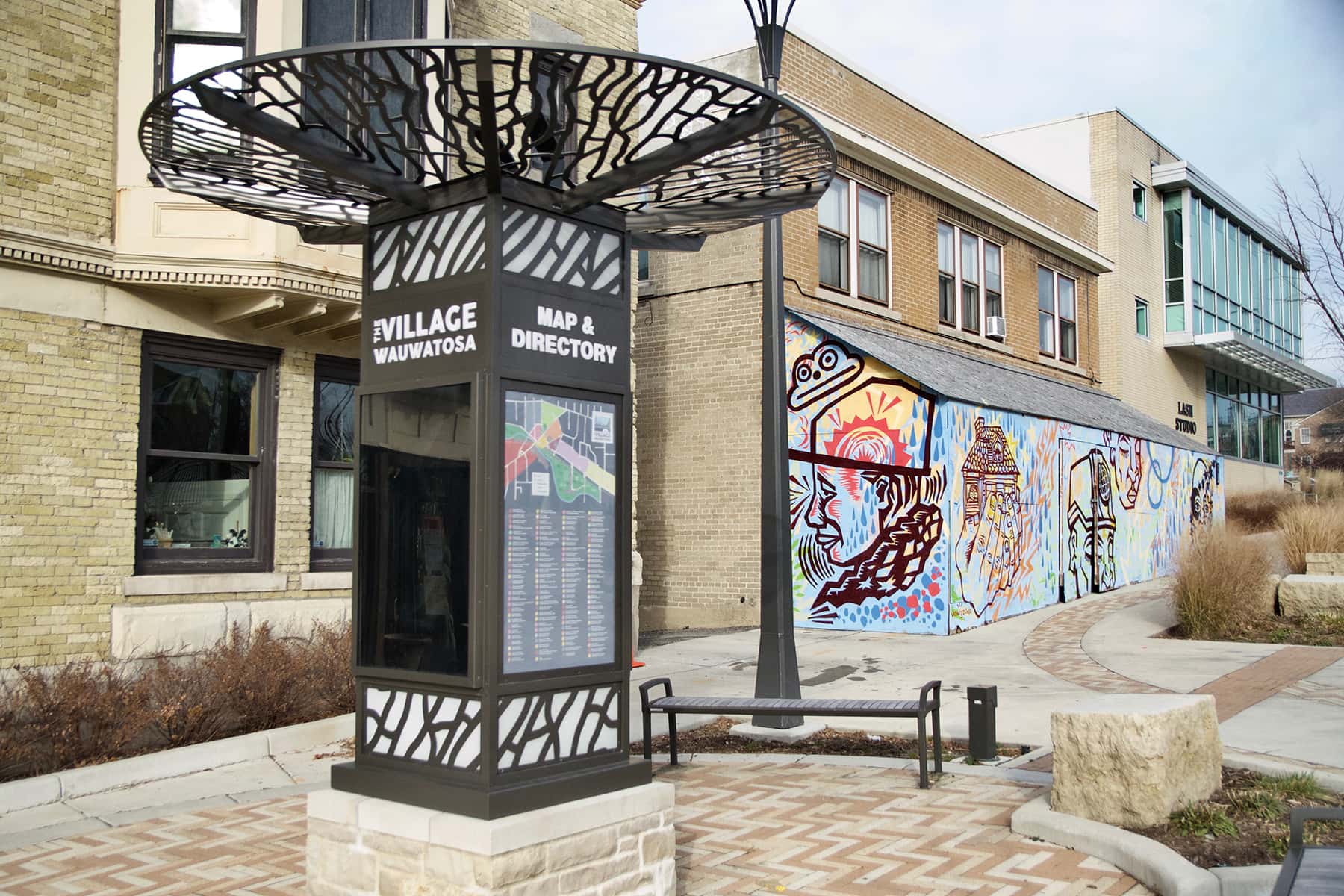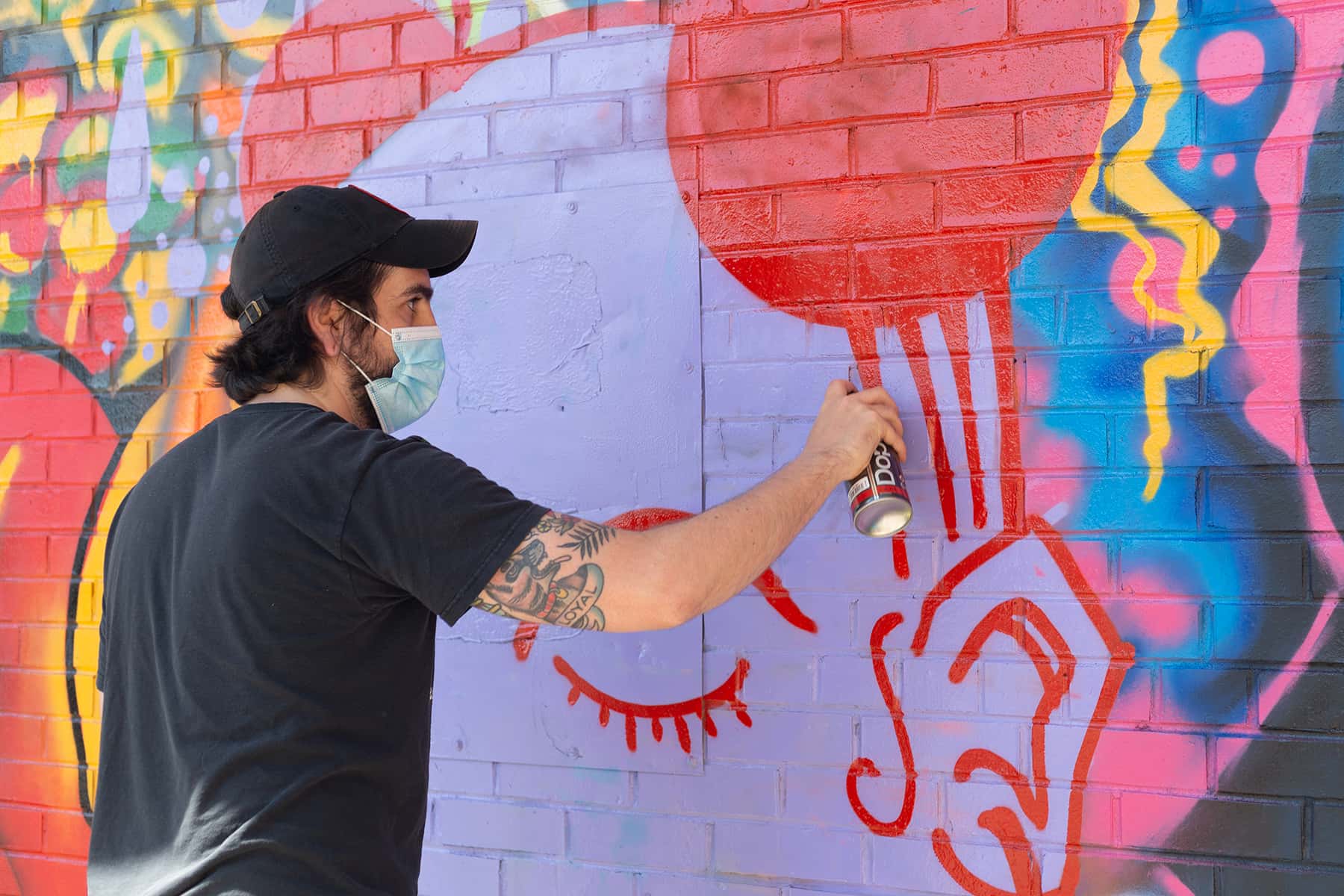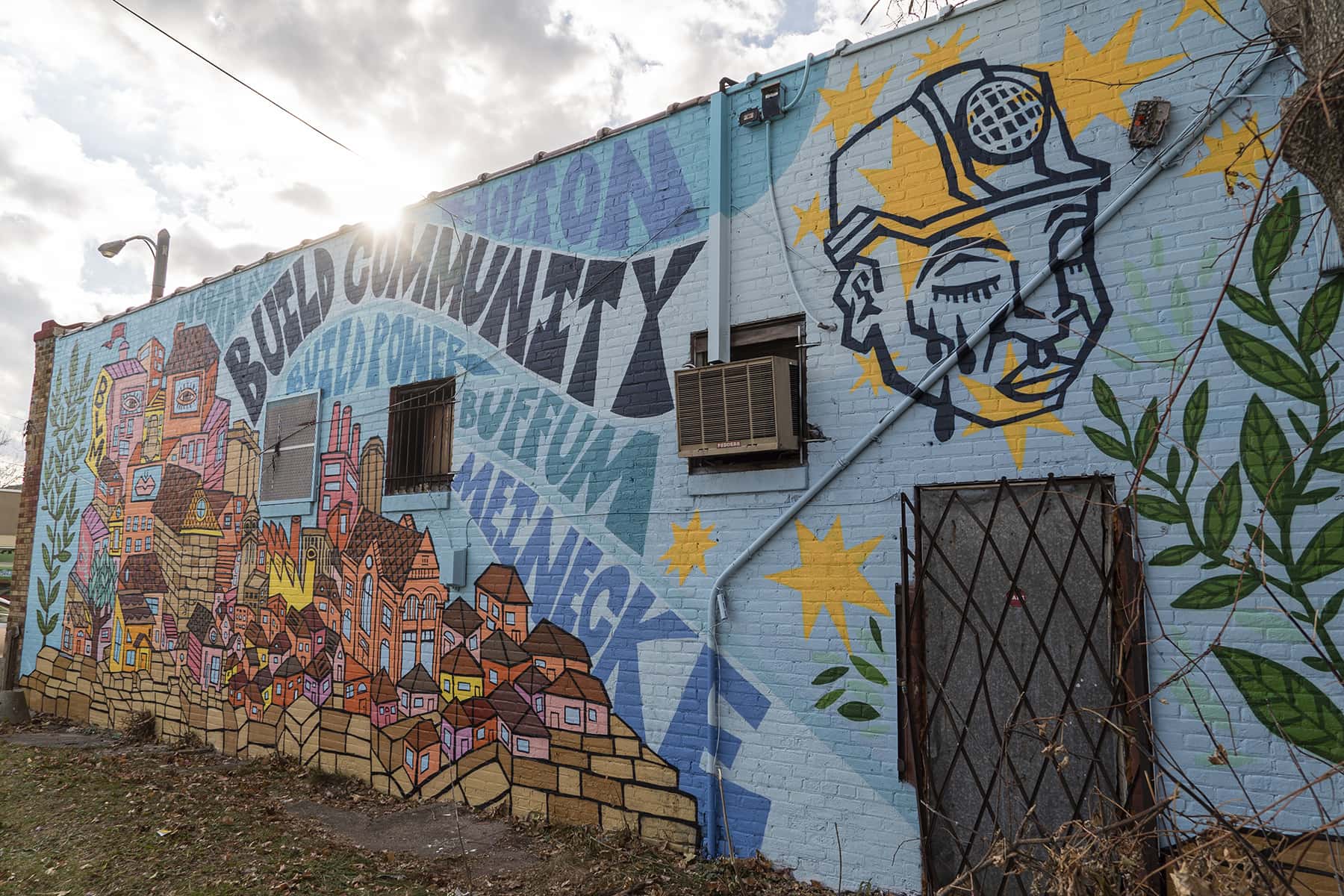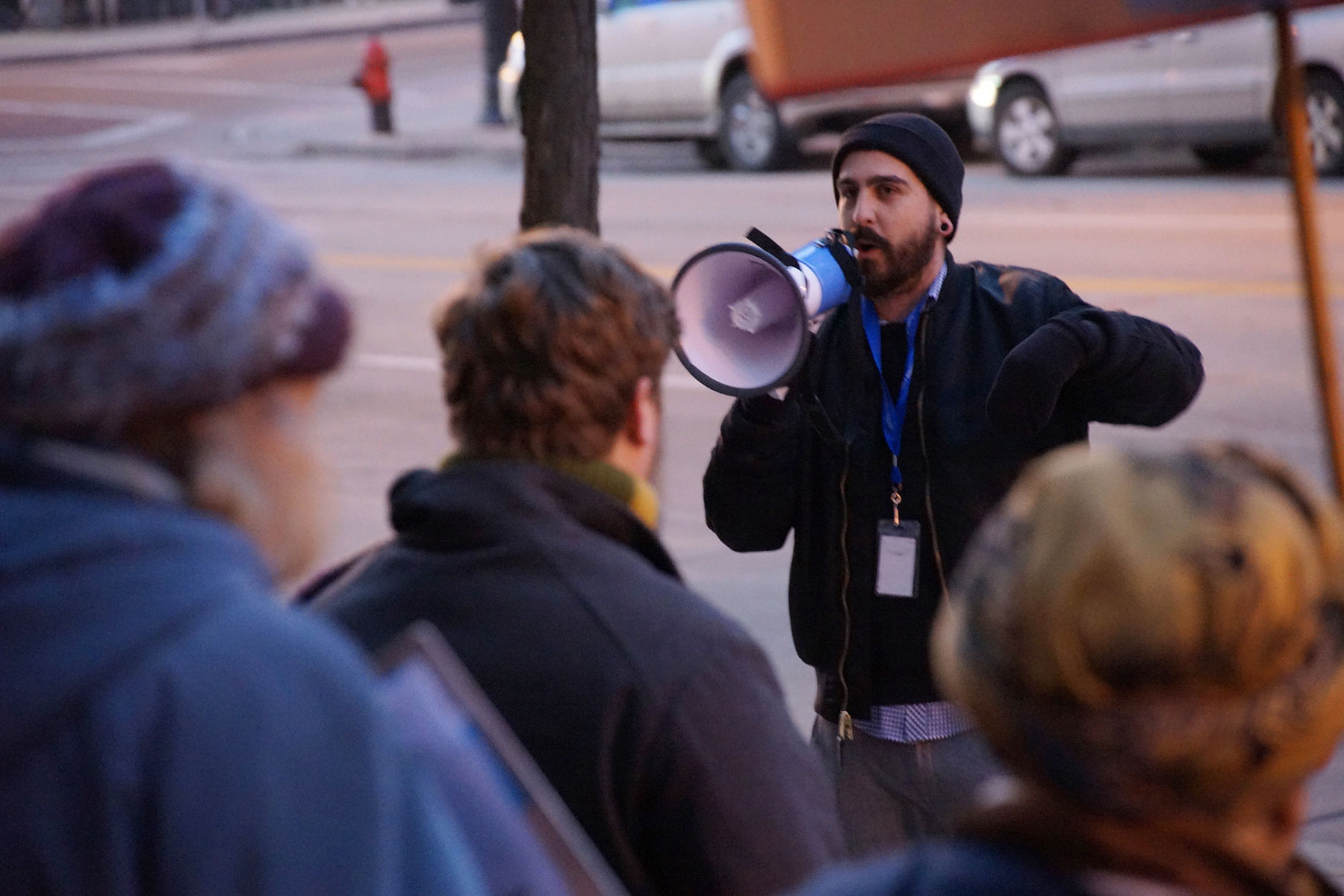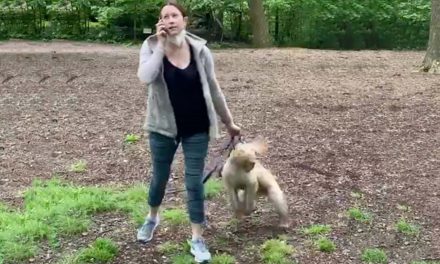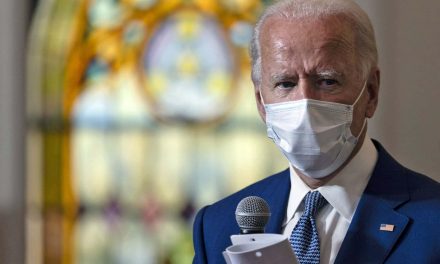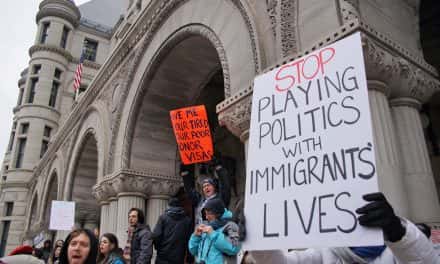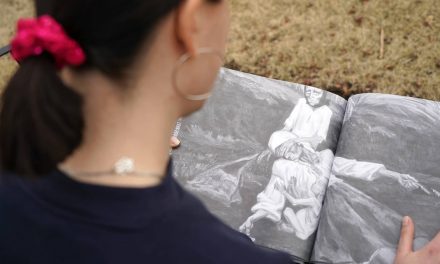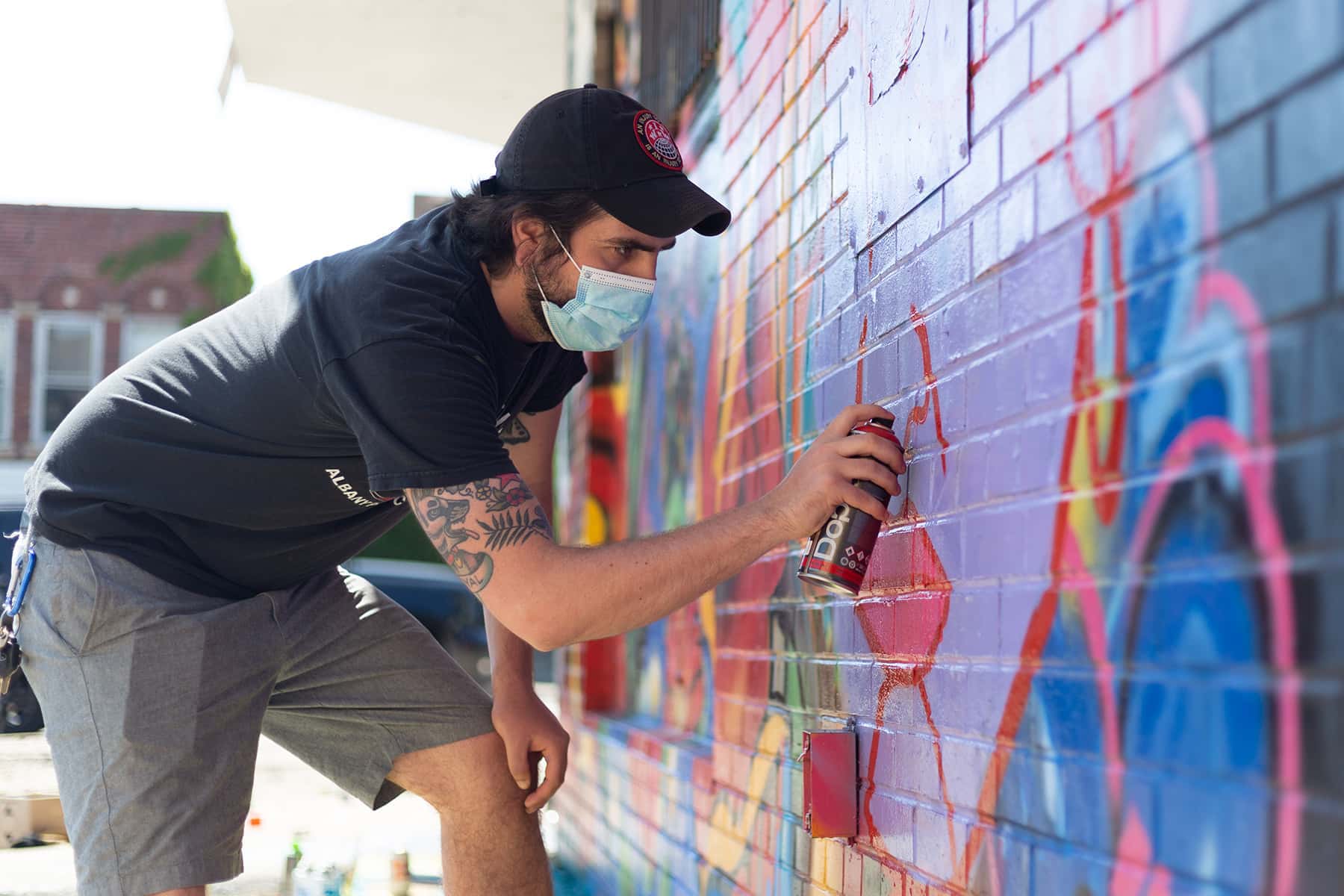
Throughout the months of the pandemic, Republican and Democratic rhetoric, Biden’s win and Trump’s preposterous recounts, protesters in Milwaukee have been marching and fighting for over 180 days with demands for equity, justice and human rights: for Black and Brown people and against police murder and corruption.
Their rallying cries: No justice, no peace! Say their names! Organizers have walked, biked, and caravanned day in and day out, often confronted by riot gear and tear gas. As businesses in Kenosha, Milwaukee and Wauwatosa boarded up, artist activists shook up their spray cans and created muraled memorials and messages to remember those killed and to fuel the fight. I learned that one of those artists, John Fleissner, was interviewed by a reporter who suggested in his article that the message of Fleissner’s murals was “peace.” Since Fleissner is a former student of mine, as well as a union organizer and public school teacher, I wasn’t surprised when he found that angling funny. I wanted to give him a chance to speak truth to power without any seeking an easy platitude. I also wanted to hear a different perspective than the familiar haze of red and blue we’d all been bombarded with. His immediate response: “My art is not about peace. It’s about war. Class war.”
MY ART IS NOT ABOUT PEACE
During the riotous protests in Kenosha over the shooting of Jacob Blake, everything got boarded up, Trump sent in his snatch-and-grab squads, the police were acting crazy, and Rittenhouse killed two people and injured one. Kenosha: rust belt and working class. AMC Motors and Chrysler Motors, huge engines of the economy down there. Big union struggles all through the 70s and 80s, even all the way back to 1908. Those places closed down, and there was and still is a lot of hurt and racism. So I went down there and painted linocut-style murals on the storefronts: Black Lives Matter murals, pro-working class stuff, some stuff about the hurt and the fight back.
And when the protests cracked off in Tosa because Mensah has killed three people in the last five years and other Tosa cops hardly shoot their guns, again, everyone boarded up. So I went and started painting those storefronts with full-color murals. It created this whole big thing for the residents. Some of them had seen professional murals up and down North Avenue, but this was a little more edgy because they could see the spray paint going on right there. Most people thought it was great, beautiful, cool, but then some of the older folks were mad about it: “I hate that this looks not realistic, I hate that this is spray paint,” and so on.
However, most people were really into it because the murals represented something: they weren’t just paintings, they were more like installations, performances, happenings. I’m pulling up, got my friends rolling up all tough, shaking the cans, out there painting images of liberation. People are walking around, they have something to say and I’m starting conversations about the protests with everybody because I’m in those protests in the evenings. “Right on,” most would say. “I’m glad those images are up there.”
The story that really sticks with me is this elderly white woman who was walking around with a cane, and she said, “I really like your stuff!” And I was like, “Yeah, yeah!” Then she overheard someone saying something about the protests, and she was like “That’s right! Go get ‘em, kids!” She was all pumped up about the protests, not a typical upper class Tosa liberal who doesn’t want to be bothered in their nice bubble, saying “Well, I agree with the protests but they shouldn’t break things.” Then some people said, “It’s so good that you’re putting up a nice, positive thing in this time of bad things.” And I needed to clarify for them: what’s bad is that Mensah’s killing people and what’s good is that we’re shaking stuff up. That’s good. That’s the “nice, positive thing” out of the pandemic: that people are standing up for themselves.
I was driving by one of my murals and I saw this news person with his camera crew and I rolled up. I told him I was the muralist and was really straight up with him: “I’m for the protests, and have done a huge Black Lives Matter mural, but with these Tosa murals, I tried to keep them a little ambiguous.” Like one of the images was just a McDonald’s worker. Pro-working class image, but not something that anyone would have a reason to be offended about. Can’t call it ‘left wing’ – well, it is left-wing, but who’s going to say I don’t like McDonald’s workers? You have to be a pretty big jerk to say that.
He kept trying to get me to say that I was bringing people together and I dodged the question: “Well, maybe we’re trying to bring people together … to stand up for what’s right.” I told him that it was less about togetherness and more about pushing important conversations. It was funny to me that they were trying to divorce the art from the social context in which it was created. But then when they did the story, the first thing they opened up with was “A message of peace.”
I thought that was kind of funny, because I never said anything about peace. The real thing that happened in creating it is that it did push conversations about what was going on and the protests on 76th & North where people were standing off against the cops. Right after I finished that mural in the village, I went up there and got tear gassed, worse than I had all summer. They just opened up super hard. They hated us. My art is about war, class war – not peace.
THE CAUSE OF LABOR IS THE HOPE OF THE WORLD
The core of my work is that I’ve been involved in organizing labor unions since I graduated art school in Baltimore. After I moved back from college, I got involved in labor, pro-working class and left-wing politics. I really got seriously involved in the Wisconsin Uprising against Scott Walker’s Act 10, which eliminated collective bargaining rights for all public sector workers other than cops. There were big wildcat strikes, not sanctioned by the bureaucracy of the labor unions but by the rank and file workers, shutting down school districts and going to Madison and occupying the capitol.
I was keeping my eye on all this. With this attack on labor in Wisconsin, I realized our place as working people and the power we have to change things. We don’t need some blood-sucking class at the top everybody over and sitting on their butts. That’s the way I look at things: “The cause of labor is the hope of the world.”
Then I got involved in the subsequent Occupy Movement and got further exposed to the nuances of the politics of the left. I went around the state and country organizing labor unions for several years. I’ve worked for the American Federation of Teachers and the National Education Association. I organized phlebotomists for the largest public sector union, the American Federation of State, County and Municipal Employees (AFSCME) and a union of 900 workers at a community college in Pittsburgh, Allegheny County.
When I was just getting started with organizing, working as a staffer in major unions, I learned the lesson that the real way to build militant stuff is when you’re a worker on the shop floor, on the job. After doing so much organizing around the country, I listened to that lesson and started teaching art for Milwaukee Public Schools.
I wanted to become a lot more embedded in a large workplace for the long term and build the confidence and the trust of my co-workers. That’s literally radical. The word radical, you know, means “from the root”. I started working as a teacher so I could really build for power at work every day and not just as a staffer who’s separate from the workers.
TEACHING TO EMPOWER THE DISEMPOWERED
Another reason I became a teacher is because I was organizing with a teachers’ union in Racine. One of the teachers was an older communist whose Jewish parents from NYC moved just outside Pittsburgh to work in the steel mills. This teacher had worked in machine shops before he became a teacher. He modeled for me how you can organize teachers, students and parents to all be united around the same cause and really shape a school to have self-determination and self-direction. That’s what students need and deserve, right?
The fact that he is a communist and that I’m a leftist doesn’t mean that we’re shoving anything down anyone’s throat. We’re not indoctrinating anyone, telling anyone what they need to think. We just believe that people should have some control over their own destiny. We believe that democracy should be something that we should practice not only through voting but in the workplace and in our communities. So I was inspired by how some of my mentors could be great teachers and teach students what they want and need and simultaneously build up the power for the people who are typically disempowered.
I wanted to immerse myself in the lives of people in Milwaukee and because Milwaukee Public Schools is the largest employer in the city, I could really be a part of where the young people are at. The struggle in MPS over the last ten years has been to maintain a free, public, integrated, secular education for everybody. It’s an institution worth fighting for against the forces of capital who want to come for the last vestiges of social programs and public services.
MPS teachers are not given what we need to teach. And we’re stolen from. Public tax dollars are taken away from my students and my co-workers, funding institutions that are run by capitalists. They’re thieving from working people, you know? It’s been a fight. And part of that fight is that I have to bring some of that fight into the education itself, into my pedagogical practices. Students need to know reality.
I teach for empowerment by teaching my kids about the history of liberation movements. That’s what history is and that’s the position that working people are in and students of color are in. Students know the position they’re in. They’re living it. So teachers like me are not telling students anything they don’t know, we’re just giving them frameworks to understand things, understand history and the current situation, things that are relevant to their lives. But I never tell a kid what to think. Even recently, when students asked me who I voted for, I didn’t just give them my whole bit about what I think about voting, about Trump, about Biden. I didn’t. But I do keep talking about Black Lives Matter and art movements that are engaged in social movements. Most of all, I teach them how to express ideas with images, to say something with art.
Sure, I’ll teach a kid how to do a still life and draw the details on a leaf, but what’s more important is what they are going to do to say something about something. They need to know what they want to change. What’s wrong with trying to change things for the better? Why should we be afraid to do that? That’s perfectly righteous for a teacher to do. So they say that they want better student lunches or that they’re pro- or anti-abortion. And even if I agree or disagree, my point is to help them communicate what’s important to them. So I used artistic and social movements to teach them. And my tools are printmaking and murals.
THE VALUES, STRUGGLES AND ASPIRATIONS OF THE PEOPLE
At art school, I was really grateful to be exposed to all this wonderful art. I learned so much from it and I wouldn’t take it back – though I do have some student debt, which is frustrating – but nevertheless, I also thought that it was rooted in what I’d call a bourgeois tradition of artmaking. Even though there have been avant garde art movements that have been deeply tied to the left and working class movements, other dominant traditions of artmaking were very defined by bourgeois culture: the rich determined what got funded, what was good art, what artists needed to do to get into galleries, what art cost at auction houses. The way the art world worked was very divorced from everything happening out on the streets.
I was studying printmaking, which is super integrated into the history of the left and workers’ movements. Even back to when printing with letterpress was the primary mode of reproduction, the printers unions would be full of anarchists. In fact, some of the Haymarket martyrs who struck for an eight-hour day were printers. And then you have Käthe Kollwitz and the German Expressionists who were doing depictions of the working class in the Weimar Republic and the Nazis said “No, this is degenerate art. It doesn’t represent realism. This isn’t something we want the German people to be looking at.” The thing about art that doesn’t look like reality is that it reveals something deeper about our reality and that’s something that attracts me to it.
It’s the reproduction of th rough-edged linoleum cut images that I make that can be accessible to all people. We put posters up in the streets, we print t-shirts, anyone can access it, and that tradition goes back in printmaking. I didn’t learn a ton of any of this working class and left wing tradition, even in the printmaking department in college: I learned how to print, but when these massive social movements started cracking off in the streets, I realized how socialist printmaking was. That was not a part of the learning tradition at art school. Instead, I had to find that out on my own. And so that’s how my printmaking and my organizing started to be connected.
I also teach the history of muralism, particularly Mexican muralism, which reflected the values and new ideas of the new society of post-revolutionary Mexico. After the revolution, Mexico established public institutions like universities and libraries to bring progressive reforms to society, accessible to all. They adorned the walls of those institutions with images that reflected the values, struggles and aspiration of the revolution for common people to improve their lives. That’s what muralism is: reflecting the struggle of the community where the wall is. Putting that in public for everyone to see. You don’t buy it off the wall. It’s for everyone.
Siqueiros, Orozco and Rivera were all creating murals of workers standing up to the bosses. They are, in many ways, the xenith of the muralist tradition that we should really be looking at. Siqueiros was a contemporary of Rivera, but even more fiery. He would do some gnarly stuff. He would even take a long time off of painting murals to go agitate all over South America. I identify with his need to take time off from his art and rile things up, which is what I’ve done for years at a time.
CREATING ART THAT CHALLENGES
Milwaukee has been so hard on murals and graffiti for decades. There was an alderman when I was in high school who had this crusade against them. It reminds me of the Nazi’s Degenerate Art Exhibition. Instead of calling out leftist, pro-working class and other supposedly “degenerate” art forms, there were people saying “No murals because it’s gang stuff.” My friends and I would go to Chicago or Minneapolis, with murals all over, but Milwaukee was so stunted in its muralism because of its suppression of hip-hop style graffiti. They will throw you in jail for graffiti in this city like they won’t in any other city, especially on the east coast, where it’s like a rite of passage for teenagers. Around here, they hate it and will throw you in the slammer for it.
It reminds me of those movies from the 1970s like Dirty Harry and Death Wish that got all mixed up with Reaganism in the 1980s: “Society is falling apart. We need a rain to wash away all this trash on the street. We need rough, rugged guys to clean up the streets.” Graffiti as the downfall of Western civilization! We’re writing on the walls and somehow that’s a sign of how degenerate our society has become. That’s what these people think.
Not to say that there haven’t been awesome artists doing murals in Milwaukee for a long time, but the development of muralism has certainly been stunted. In recent years, with more murals popping up, I’m glad that these walls are being painted because otherwise it’s just nothing. But on the other hand, I’d like people to consider that the tradition of muralism, at its core, is the representation of the values, struggles and aspirations of the people in the community. That’s the thrust of murals in an art historical context. And if you want to continue that tradition and bring it to the present day and to Milwaukee, we need to consider this more. Where are we painting and why? For whom?
And we need to avoid having murals funded by developers fueled by gentrification. And mural plans and initiatives that want artists to create without any ideas. I’ve seen these mural calls where they state in the rules “It can’t be about anything. It’s just to bring people together.” I laugh at this, what I call positive nihilism. It’s like they don’t believe in anything any which way, but that in itself is like a belief system. One devoid of conflict. One afraid of challenging anything worth challenging.
© Photo
Claudio Martinez, Joe Brusky, Dominic Inouye, and Lee Matz

